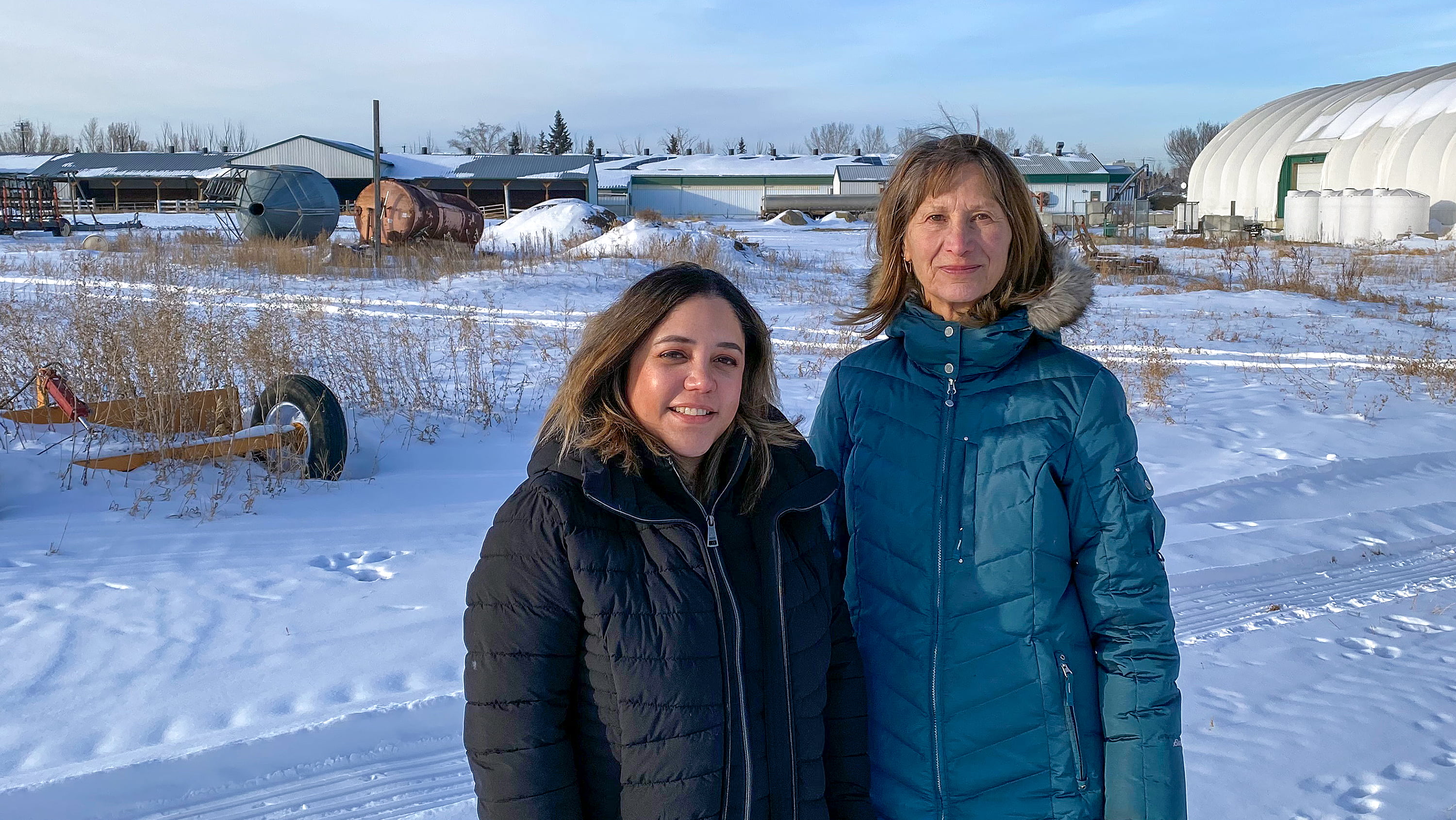The next time you buy a locally grown cucumber or a jar of Alberta honey, try to picture the people who produced it for you. The first person that comes to mind may not be a migrant farm worker from Mexico, but Alberta agricultural operations are increasingly dependent on such seasonal labourers.
Canadian farms employ 60,000 temporary foreign farm workers, according to the Canadian Federation of Agriculture, representing almost one-quarter of those working in agricultural jobs in Canada. Four-fifths come from just three countries — Mexico (44.1%), Guatemala (24.1%) and Jamaica (14.8%) — according to Statistics Canada.
Maricruz Barba Gonzalez is working to give voice to this hidden population. In “From the Voices of Mexican Seasonal Farm Workers in Alberta” — her master’s thesis for the University of Alberta’s School of Public Health — she reports on her interviews with nine Mexican men about their well-being, including their working and living conditions, and mental and physical health.
“They are always divided. They don’t feel they belong either to Mexico or to Canada, so they feel very lonely,” Barba Gonzalez says. “And even though they tell you that it is a painful experience and that conditions are not fair, they feel they don’t have an option, so they accept that.”
“There’s a lack of awareness of how much Canada is depending on migrant labour for agriculture, especially in areas that are very hands-on like vegetable field crops or greenhouses and honey production,” says professor Mary Beckie, director of the school’s Community Engagement Graduate Program. “They’ve become a major part of our workforce, but they feel very hidden.”
“A modern slave”
Barba Gonzalez says a number of factors contribute to the workers’ sense of isolation. Although wages for farm work are definitely higher in Canada than in Mexico, they must leave their families behind for six to eight months of each year to send those wages home.
Unlike longer-term temporary foreign workers in other industries, farm workers never become eligible to apply for permanent residency or landed immigrant status even though they may work in Canada for decades, because each work permit is less than a year long.
Long work hours, language barriers and a lack of access to personal transportation mean the workers have little contact with people in the local communities and must rely on their employers for access to health care and culturally appropriate food sources.
“Here you don’t have a life because you are just dedicated to work — a modern slave,” says one worker quoted in the paper.
“They told me, ‘Even though we spend half our lives here in Canada, without help from employers we cannot access services such as English classes or getting a driver’s licence,’ things that would allow them to actually be immersed with the culture,” says Barba Gonzalez.
“Their living conditions are quite variable,” says Beckie, who is also editor of the journal Canadian Food Studies. “There are no standard requirements imposed by the government, so every situation is really determined by the employer.”
Barba Gonzalez approached more than 100 workers for interviews, but only nine agreed, all men. The others were reluctant to be seen as complaining about their conditions. Each worker is evaluated on their work at the end of the growing season, determining whether they will be allowed back into the country the following year, which tends to encourage compliance, the researchers say.
Part of Barba Gonzalez’ guided interview process involved photovoice, a research method in which subjects provide a photograph and then describe its meaning in their lives. One participant provided a shot of the trailer where he is housed, which he calls a “traila” — a combination of the word “trailer” and “casa,” which means home in Spanish. Another showed a photo of tire tracks in deep snow, describing himself as a “husky dog” who pulls carts around.
A safe space to talk
Along with others, Barba Gonzalez has co-created an online toolkit for immigrant women, distributed through the Alberta Workers Association for Research and Education. Originally from Mexico herself, she has worked in the past for the Mexican government and has also worked on a food sovereignty project with scholar and activist Vandana Shiva in India.
Barba Gonzalez hopes to pursue her PhD next. Currently, she is working for REACH Edmonton Council for Safe Communities as a neighbourhood organizer. She is also hoping to support REACH in preventing human trafficking of foreign nationals, a problem that has been increasing in recent years in Canada.
“I would like Canadians to be aware that people from Mexico are making it possible for us to have food on our tables,” she says. “When we measure it through only an economic lens, then the Seasonal Agricultural Worker Program is a good program, but when you measure well-being, you can see it’s a really complex topic with many layers, involving many organizations and governments.”
Barba Gonzalez would like to see seasonal farm workers welcomed by people in the rural communities where they live, and also consulted by governments developing policies that affect them.
“These workers don’t participate in any meetings where decisions are made. I would say first talk to them in a safe space where they feel protected, and then we can build something which serves everyone,” she says.
Barba Gonzalez’s research was supported by the Congress Graduate Merit Award from the Federation for the Humanities and Social Sciences in 2023, as well as the Mary Louise Imrie Graduate Student Award in 2023 and the University of Alberta Master's Entrance Scholarship for the 2020-21 academic year.
